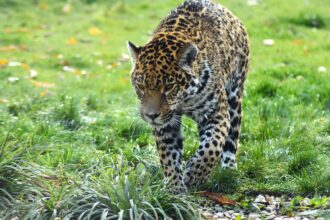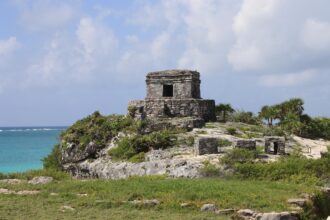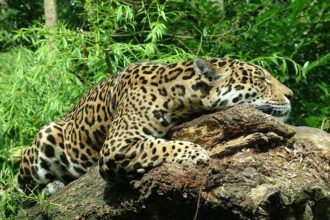Tulum’s Grassroots Movement: Protecting Jaguars and Their Ecosystem
Background on Tulum’s Ecosystem
Tulum, located on the Caribbean coast of Mexico in the state of Quintana Roo, is not only famous for its stunning beaches and ancient ruins but also for its rich biodiversity. One of the most iconic inhabitants of this region is the jaguar (Panthera onca), a crucial apex predator that plays a significant role in maintaining the ecological balance. However, rapid development and tourism expansion have threatened this delicate ecosystem, prompting the rise of grassroots movements aimed at conserving the region’s wildlife, particularly the jaguar.
The Role of Jaguars in the Ecosystem
Jaguars are vital for the health of their environment. As apex predators, they control populations of other species, preventing overgrazing and promoting biodiversity. Their presence ensures the stability of local food chains and supports the overall health of tropical forests. Through processes such as seed dispersal, jaguars also contribute to plant diversity, creating a richer habitat for other species.
In Tulum, the various ecosystems—from mangroves to wetlands and tropical forests—provide essential habitats for many species, including local fauna like howler monkeys, various bird species, and reptiles. These ecosystems are integral to the region’s cultural heritage and ecological sustainability.
Threats Facing Jaguars
Despite their importance, jaguars face numerous threats in Tulum. Habitat loss, primarily due to urban development, agriculture, and deforestation, drastically reduces their territory and prey availability. Furthermore, poaching poses a serious danger, as jaguars are hunted for their pelts and as part of illegal wildlife trade. Climate change also exacerbates these issues, leading to shifts in prey distribution and habitat degradation.
The Grassroots Movement Emerges
In response to these challenges, local community members, conservationists, and non-profit organizations have banded together to form grassroots movements dedicated to jaguar protection. These movements aim to raise awareness about the importance of conserving both jaguars and their habitats, while also confronting the underlying causes of ecological decline.
Community Involvement
One of the defining features of Tulum’s grassroots movements is the strong involvement of local communities. Residents recognize the value of jaguars not only as key species in their ecosystem but also as part of their cultural and economic heritage. Many community members have begun participating actively in conservation efforts by:
-
Educational Workshops: Various non-profits conduct workshops that educate locals about jaguar conservation, the ecological importance of these wild cats, and sustainable practices to minimize human-wildlife conflict.
-
Sustainable Tourism Initiatives: Local guides are trained in ecotourism practices that avoid disturbing wildlife while promoting education and economic benefits through responsible tourism.
-
Citizen Science Programs: Community members engage in monitoring jaguar populations and habitats through programs collecting data, which helps conservationists understand movements and behavior patterns.
- Community Committees: Some locals have formed committees focused on land use and conservation, ensuring that development projects consider their environmental impact. These committees advocate for sustainable practices to protect jaguar habitats.
Collaboration with NGOs and Government
The grassroots movement in Tulum has also garnered the support of various non-governmental organizations (NGOs) and government entities. Collaborations between local communities and these organizations have proven effective in driving conservation efforts forward. By sharing resources, knowledge, and funding, they have been able to implement larger-scale projects such as habitat restoration and creating wildlife corridors.
Wildlife Corridors: One significant initiative is the establishment of wildlife corridors that connect fragmented habitats. These corridors allow jaguars and other species to move freely, promoting genetic diversity and enhancing their chances of survival.
Legislative Support: Grassroots efforts have also led to lobbying local authorities for stricter regulations on land use and hunting practices. By engaging with governmental agencies, they are working to ensure that conservation policies are not only created but also enforced.
Success Stories
The impact of these grassroots movements can be seen in various success stories across the region. Increased sighting reports of jaguars and improved habitat conditions are promising signs of recovery. For example, through collective efforts, reforestation projects have begun in areas surrounding Tulum, creating new habitats for jaguars and other species.
Additionally, collaborative educational initiatives have fostered a greater appreciation for the natural heritage and the importance of conservation among younger generations. Schools have incorporated environmental education into their curricula, inspiring a new wave of conservationists among the youth.
Challenges Ahead
Despite the successes, challenges remain. The pressure of development continues, with many areas targeted for tourist resorts or other infrastructures. Continued funding for conservation projects and community education efforts is essential for sustaining momentum. Moreover, the constant threat from poaching and illegal wildlife trafficking requires ongoing vigilance and adaptability from both grassroots activists and larger organizations.
The Future of Jaguar Conservation
The future of jaguar conservation in Tulum lies in the continued commitment of its grassroots movements, assisted by NGOs, local governments, and the global community. By prioritizing the protection of jaguars and their ecosystems, local residents are not just safeguarding their natural heritage; they are also setting a precedent for sustainable living in a rapidly changing world.
Innovative approaches combining traditional ecological knowledge with scientific research will be crucial in overcoming the challenges faced by Tulum’s jaguars. The community’s dedication serves as an inspiring model for other regions grappling with similar issues of wildlife conservation amidst development pressures.
Engaging the Global Community
To amplify their efforts, Tulum’s grassroots activists have started engaging with the global community. Social media campaigns, documentary screenings, and eco-tourism initiatives attract international visitors who contribute to local economies while promoting conservation awareness. This approach not only raises funds for conservation efforts but also brings visibility to the struggles and achievements of local communities.
Through this multidimensional strategy, Tulum’s grassroots movement stands as a beacon of hope for jaguar conservation, highlighting the power of community-driven action in creating a sustainable future for both wildlife and people. By inspiring similar efforts worldwide, they exemplify the importance of local agency in addressing global conservation challenges.







